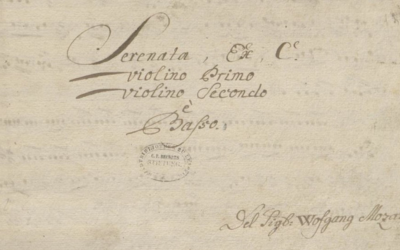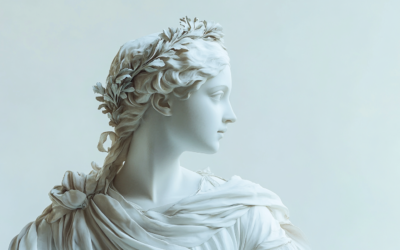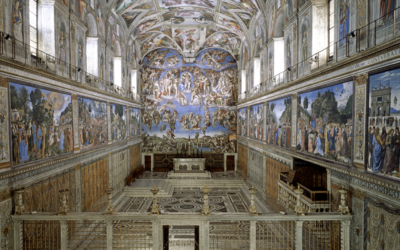The Influence of Ligniville
Unpacking Mozart's Early Education
The story of Ligniville illustrates the pitfalls of romanticizing Mozart’s early life and education, reminding us that the narrative of genius is often a construct that obscures the laborious aspects of musical development.
Mozart: The Fall of the Gods
This book offers a fresh and critical look at the life of Wolfgang Amadeus Mozart, challenging the myths that have surrounded him for centuries. We strip away the romanticised image of the “natural genius” and delve into the contradictions within Mozart’s extensive biographies. Backed by nearly 2,000 meticulously sourced citations, this work invites readers to explore a deeper, more complex understanding of Mozart. Perfect for those who wish to question the traditional narrative, this biography is a must-read for serious music lovers and historians.
"Don’t put strange ideas in her head. She plays like grass grows; it’s her nature: she is not a prodigy."
Mozart: The Fall of the Gods
“Don’t put strange ideas in her head. She plays like grass grows; it’s her nature: she is not a prodigy. If she hears these words, she will get an inflated sense of self, imagining some magnificent future, whereas it will always be work and more work.” This quote encapsulates the skepticism surrounding the notion of child prodigies in the context of musical education, particularly when we examine Wolfgang Amadeus Mozart’s formative years.
The idea that Mozart was a genius who mastered the intricacies of composition at an early age has been championed by figures like Abert, who suggested that Wolfgang learned the rules of writing from Maestro Martini. However, recent musicological research has dismantled this theory, revealing the complex truth about Mozart’s early education and the roles of those who influenced him, including the Marquis de Ligniville.
Leopold Mozart, Wolfgang’s father, regarded Ligniville as “the best contrapuntist in all of Italy.” Ligniville, a member of the prestigious Accademia Filarmonica in Bologna, was thought to represent the old Roman school of counterpoint. It was under his influence that Mozart supposedly composed significant works, including the Stabat Mater K.Anh.17 and the Kyrie K.89. For decades, these attributions went unchallenged, reinforcing the myth of a young Mozart capable of complex contrapuntal writing.
Yet, as modern scholars now assert, many of these pieces were actually copied by Mozart, leading to a reevaluation of his abilities as a contrapuntist. The lingering perception that Mozart excelled in counterpoint persists in numerous academic texts, despite the lack of substantiated evidence. It is striking how musicology, which should shun dogma, continues to propagate such myths, comparing Mozart’s work to that of other composers like Haydn and Rossini.
In particular, the Stabat Mater has garnered attention for its apparent mastery of canonic writing. Contemporary biographers marveled at a young boy’s ability to control compositions reminiscent of late 16th-century styles. However, we now recognize that the piece was heavily influenced by Ligniville’s work, with only a fraction of the movements authentically attributed to Mozart. Indeed, it has been established that Wolfgang copied Ligniville’s Stabat Mater, which itself consisted of straightforward canons, devoid of the sophisticated depth characteristic of true counterpoint.
Notably, Ligniville’s reputation as a composer was not grounded in his ability to write intricate fugues. His music—often simple and lacking the rigor required for upper-level composition courses—failed to impress contemporaries, including Grand Duke Pietro Leopoldo, who noted the work as “singulier” rather than “excellent.” This implies that while Ligniville may have held some esteem, he did not possess the skills that would warrant the title of the greatest contrapuntist in Italy.
Leopold’s enthusiasm for Ligniville’s abilities raises questions about his own understanding of counterpoint, revealing that he may have misjudged the Marquis’s capabilities. While Ligniville did have some influence on Mozart, it appears to have been limited and heavily reliant on copying rather than original composition. This oversight contributes to the enduring misconception of Mozart’s innate genius, overshadowed by the more mundane realities of musical training and imitation.
Ultimately, the story of Ligniville illustrates the pitfalls of romanticizing Mozart’s early life and education. It serves as a reminder that the narrative of genius is often a construct, one that can obscure the more laborious and collaborative aspects of musical development.
As we continue to explore the complexities of Mozart’s influences, it becomes increasingly clear that his path was marked by learning, imitation, and the guidance of those who came before him, rather than a straightforward ascent to greatness.
You May Also Like
Mozart’s Serenade? A New Discovery? Really?
In Leipzig, what was thought to be a new autograph of Mozart turned out to be a questionable copy. Why are such rushed attributions so common for Mozart, and why is it so hard to correct them when proven false?
Mozart’s K 71: A Fragment Shrouded in Doubt and Uncertainty
Mozart’s K 71, an incomplete aria, is yet another example of musical ambiguity. The fragment’s authorship, dating, and even its very existence as a genuine Mozart work remain open to question. With no definitive evidence, how can this fragment be so confidently attributed to him?
The False Sonnet of Corilla Olimpica
Leopold Mozart’s relentless pursuit of fame for his son Wolfgang led to questionable tactics, including fabricating a sonnet by the renowned poetess Corilla Olimpica. This desperate attempt to elevate Wolfgang’s reputation casts a shadow over the Mozart legacy.
Mozart’s K 73A: A Mystery Wrapped in Ambiguity
K.143 is a prime example of how Mozart scholarship has turned uncertainty into myth. With no definitive evidence of authorship, date, or purpose, this uninspired recitative and aria in G major likely originated elsewhere. Is it time to admit this is not Mozart’s work at all?
A Farce of Honour in Mozart’s Time
By the time Wolfgang Amadeus Mozart received the Speron d’Oro, the once esteemed honour had become a laughable trinket, awarded through networking and influence rather than merit. Far from reflecting his musical genius, the title, shared with figures like Casanova, symbolised ridicule rather than respect.
The Legend of Mozart’s Miserere
The enduring popularity of the narrative surrounding Mozart’s Miserere highlights the allure of the prodigy myth, but as we peel back the layers, we uncover a more nuanced picture of his life and the musical landscape of the time. The reality often contrasts sharply with the romanticized tales that have shaped our understanding of his genius.







